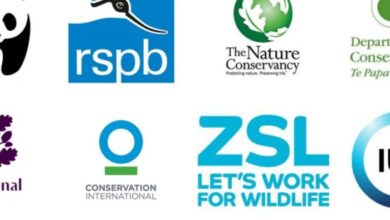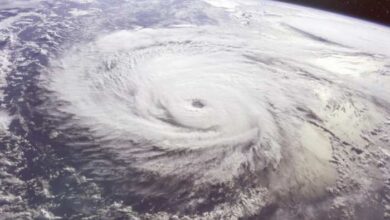
Debt and the Environment: A Sustainable Future?
Debt and the environment, two seemingly disparate concepts, are inextricably intertwined in our modern world. The pursuit of economic growth fueled by debt often comes at the expense of our planet, leading to resource depletion, pollution, and climate change.
This blog explores the complex relationship between debt and the environment, examining the environmental impact of debt, the role of debt in financing environmental projects, and the potential for sustainable debt practices to create a more sustainable future.
From the perspective of a global citizen, the interconnectedness of debt and environmental degradation becomes alarmingly clear. The relentless pursuit of economic growth, often fueled by borrowing, has resulted in unsustainable levels of resource extraction, deforestation, and pollution. This unsustainable model not only threatens our planet’s health but also creates a vicious cycle of debt and environmental degradation, particularly in developing countries.
The Environmental Impact of Debt

The environmental impact of debt is a complex and multifaceted issue, with far-reaching consequences for our planet. While debt itself is not inherently harmful, excessive debt can drive unsustainable economic activities that contribute to environmental degradation. This is because debt often fuels economic growth, which in turn leads to increased resource consumption and pollution.
Debt-Driven Economic Growth and Resource Depletion
Debt-driven economic growth is often characterized by a focus on short-term gains and a disregard for long-term sustainability. This can lead to a cycle of overconsumption and resource depletion, as businesses and individuals borrow money to invest in projects that may have significant environmental impacts.For instance, a company might take on debt to expand its operations, leading to increased production and resource extraction.
While this may boost economic growth in the short term, it can also lead to deforestation, pollution, and the depletion of natural resources.
Industries Heavily Reliant on Debt Financing with Significant Environmental Footprints
Several industries rely heavily on debt financing and have significant environmental footprints. Some examples include:
- Fossil fuel extraction:The fossil fuel industry is a major contributor to climate change, and many companies in this sector rely on debt to finance exploration, drilling, and production. This debt can fuel unsustainable practices, such as fracking, which can contaminate groundwater and release greenhouse gases.
- Mining:Mining operations can have devastating environmental impacts, including deforestation, soil erosion, and water pollution. Mining companies often rely on debt to finance large-scale projects, which can further exacerbate these problems.
- Construction:The construction industry is a significant consumer of resources and a major source of pollution. Debt financing can fuel unsustainable construction projects, such as large-scale developments that destroy natural habitats and increase urban sprawl.
Comparing the Environmental Impact of Different Debt Types
The environmental impact of different debt types can vary significantly. For example:
- Sovereign debt:Sovereign debt is debt taken on by governments. It can be used to fund infrastructure projects, which can have both positive and negative environmental impacts. While infrastructure projects can improve transportation and reduce pollution, they can also lead to habitat destruction and resource depletion if not properly planned and implemented.
The environmental impact of debt is often overlooked, but it’s a crucial factor in understanding the interconnectedness of our planet. One way this impact manifests is through the dumping of surplus agricultural products as a form of “food aid,” which can devastate local markets and undermine sustainable food systems.
This practice of “food aid as dumping” further entrenches dependency on external aid, hindering long-term solutions to poverty and environmental degradation.
- Corporate debt:Corporate debt is debt taken on by businesses. As mentioned earlier, corporate debt can fuel unsustainable practices that lead to environmental degradation, particularly in industries with significant environmental footprints.
Debt-Fueled Environmental Projects
Debt financing has emerged as a significant tool for funding environmental projects aimed at addressing climate change, biodiversity loss, and other pressing environmental issues. While debt can provide crucial capital for these initiatives, it’s essential to understand its effectiveness and potential risks.
Examples of Debt-Funded Environmental Projects
Debt financing plays a crucial role in funding various environmental projects worldwide. Here are some notable examples:
- Renewable Energy Projects:Debt financing has been instrumental in the development of solar, wind, and geothermal power plants. For example, the construction of the Hornsdale Power Reserve in South Australia, the world’s largest battery storage system, was financed through a combination of debt and equity.
This project helps stabilize the electricity grid and integrate renewable energy sources.
- Sustainable Infrastructure:Debt financing supports the development of sustainable infrastructure projects, such as green buildings, public transportation systems, and waste management facilities. For instance, the Green Climate Fund (GCF) provides loans and grants to developing countries for climate-resilient infrastructure projects, including renewable energy, sustainable transportation, and water management.
- Forest Conservation and Restoration:Debt financing is used to support initiatives aimed at conserving and restoring forests, which play a vital role in mitigating climate change and preserving biodiversity. For example, the REDD+ (Reducing Emissions from Deforestation and Forest Degradation) mechanism allows countries to receive financial incentives for reducing deforestation through debt-for-nature swaps or carbon offset programs.
These institutions have a crucial role to play in supporting sustainable development, ensuring that debt doesn’t come at the expense of a healthy planet.
3>Effectiveness of Debt Financing in Promoting Sustainable Development
Debt financing can be an effective tool for promoting sustainable development by:
- Providing Access to Capital:Debt financing provides access to large amounts of capital that can be used to fund large-scale environmental projects that may not be feasible with traditional sources of funding.
- Leveraging Private Sector Investment:Debt financing can incentivize private sector investment in sustainable projects by reducing the financial risk for investors.
- Encouraging Innovation:Debt financing can support the development of new technologies and approaches to address environmental challenges.
Potential Risks Associated with Debt-Funded Environmental Projects
While debt financing offers significant benefits, it also presents certain risks that must be carefully considered:
- Debt Burden:High debt levels can create a financial burden for governments and communities, potentially hindering their ability to invest in other critical areas.
- Project Failure:If environmental projects fail to achieve their objectives, the debt incurred to finance them can become a wasted investment.
- Environmental Impacts:Some debt-funded environmental projects, such as large-scale hydropower dams, can have significant environmental impacts that need to be carefully assessed and mitigated.
- Transparency and Accountability:Lack of transparency and accountability in debt-funded environmental projects can lead to corruption and misuse of funds.
Benefits and Drawbacks of Debt Financing for Different Environmental Initiatives
The effectiveness of debt financing varies depending on the specific environmental initiative. Here’s a table comparing the benefits and drawbacks of debt financing for different environmental initiatives:
| Environmental Initiative | Benefits of Debt Financing | Drawbacks of Debt Financing |
|---|---|---|
| Renewable Energy Projects | Large-scale projects require significant capital, debt financing provides access to funding. | High upfront costs, project delays, and potential for stranded assets if renewable energy policies change. |
| Sustainable Infrastructure | Debt financing can leverage private sector investment and create jobs. | Projects can be complex and require long-term commitments, potential for cost overruns and delays. |
| Forest Conservation and Restoration | Debt-for-nature swaps can provide financial incentives for conservation efforts. | Lack of clear monitoring and enforcement mechanisms, potential for leakage and displacement of deforestation. |
Debt and Climate Change
The relationship between debt and climate change is complex and multifaceted. Debt can both exacerbate climate change vulnerabilities and offer opportunities for climate action. Understanding this relationship is crucial for developing sustainable and equitable solutions to address the climate crisis.
The Interplay of Debt and Climate Change
Debt can exacerbate climate change vulnerabilities, particularly in developing countries. These countries often face higher debt burdens, making them more susceptible to the impacts of climate change. For instance, extreme weather events, such as droughts and floods, can disrupt economic activity and lead to increased borrowing to recover.
This can trap countries in a cycle of debt and vulnerability, hindering their ability to invest in climate adaptation and mitigation measures.
Climate Risks Associated with Debt
A framework for assessing climate risks associated with different types of debt can be developed based on the following factors:
- Debt Structure:The terms and conditions of debt, such as interest rates, maturity dates, and repayment schedules, can influence the vulnerability of borrowers to climate shocks. For example, short-term debt can increase vulnerability to sudden economic disruptions caused by climate events.
We often talk about the environmental impact of our consumption, but what about the environmental impact of our debt? The financial burden we carry can drive us to make unsustainable choices, and the sheer scale of the debt crisis, as outlined in this article , is a major factor in this.
The pressure to pay back loans can lead to overexploitation of resources and a disregard for long-term environmental sustainability. We need to acknowledge the link between debt and environmental degradation and find solutions that address both.
- Borrower’s Exposure:The geographic location and economic activities of the borrower can determine their exposure to climate risks. For instance, countries reliant on agriculture or coastal tourism are more susceptible to the impacts of climate change.
- Climate Change Impacts:The anticipated frequency and intensity of climate events, such as droughts, floods, and rising sea levels, can influence the level of climate risk associated with debt.
Debt-Related Policies for Climate Change Mitigation
Several debt-related policies can help mitigate climate change and build resilience. These include:
- Debt Relief and Restructuring:Providing debt relief or restructuring existing debt can free up resources for climate-related investments. This can be particularly beneficial for developing countries facing high debt burdens and climate vulnerabilities.
- Green Bonds:Issuing green bonds that specifically finance climate-friendly projects can attract investment and channel funds towards climate action. These bonds can be used to finance renewable energy projects, energy efficiency improvements, and climate adaptation measures.
- Climate-Resilient Development:Integrating climate change considerations into debt policies and development strategies can promote climate-resilient investments and reduce vulnerability to climate shocks.
The Role of Governments and Institutions: Debt And The Environment
Governments and international institutions play a crucial role in shaping responsible debt management practices that contribute to environmental sustainability. Their actions, including policy frameworks, regulatory measures, and financial support, significantly impact the environmental outcomes of debt-related activities.
Government Policies and Debt Management for Environmental Protection
Governments can implement policies to encourage sustainable debt practices and minimize the environmental impact of debt. This involves promoting transparency in debt-related activities, including environmental assessments and risk analysis. Governments can also incentivize investments in environmentally friendly projects through tax breaks, subsidies, and other financial mechanisms.
International Organizations Addressing Debt and Environmental Issues
Several international organizations work to address the interconnectedness of debt and environmental challenges. These organizations provide technical assistance, financial support, and policy guidance to developing countries, helping them manage debt sustainably and promote environmental protection.
- The International Monetary Fund (IMF): The IMF offers debt relief programs and policy advice to countries facing unsustainable debt burdens, emphasizing environmental sustainability in its lending criteria.
- The World Bank: The World Bank supports developing countries in achieving sustainable development goals through financial assistance and technical expertise. It prioritizes projects that address environmental concerns and promote sustainable debt management.
- The United Nations Environment Programme (UNEP): UNEP focuses on promoting environmental sustainability through various initiatives, including debt-for-nature swaps, where a country’s debt is forgiven in exchange for environmental conservation efforts.
Regulations and Policies Influencing Debt Practices and Environmental Impact
Regulations and policies can significantly influence debt practices and their environmental impact. Governments can implement environmental regulations that require borrowers to consider the environmental consequences of their projects and ensure that their debt obligations do not jeopardize environmental sustainability.
For instance, requiring environmental impact assessments for all projects funded by public debt can help identify and mitigate potential environmental risks.
Debt Restructuring and Environmental Sustainability, Debt and the environment
Debt restructuring can be a crucial tool for promoting environmental sustainability, especially in countries facing unsustainable debt burdens. By restructuring debt, countries can free up resources for environmental protection and invest in sustainable development projects.
- Debt-for-nature swaps: These programs allow countries to reduce their debt obligations in exchange for committing to environmental conservation projects. This approach has been used successfully in several countries, demonstrating the potential for debt restructuring to benefit both the environment and the economy.
- Green bonds: These bonds are issued to finance environmentally friendly projects, offering investors a way to contribute to sustainable development while earning a return on their investment. Green bonds can help attract investment to environmentally responsible projects and reduce the need for unsustainable debt.
The Future of Debt and the Environment

The intersection of debt and the environment is a complex and rapidly evolving landscape. As the world grapples with the urgent need for sustainable development, the financial mechanisms that drive economic growth are increasingly under scrutiny. A future where debt practices are aligned with environmental sustainability is not just desirable but essential for the well-being of our planet and future generations.
Key Challenges and Opportunities in Integrating Environmental Considerations into Debt Markets
The integration of environmental considerations into debt markets presents both challenges and opportunities. To ensure that debt financing contributes to a sustainable future, it’s crucial to address the following:
- Developing robust frameworks for assessing environmental risks and impacts: A comprehensive understanding of environmental risks associated with debt-financed projects is essential. This includes developing standardized methodologies for assessing the environmental footprint of investments and incorporating these assessments into credit risk analysis. This would allow lenders to better understand the potential environmental consequences of their lending decisions.
- Promoting green bonds and other sustainable debt instruments: Green bonds, which are specifically designed to finance environmentally friendly projects, have gained significant traction in recent years. Expanding the market for these instruments and creating a robust regulatory framework to ensure their integrity is crucial for channeling capital towards sustainable projects.
- Encouraging transparency and disclosure in debt markets: Increased transparency regarding the environmental impact of debt-financed activities is essential for investors and stakeholders to make informed decisions. This includes mandating the disclosure of environmental risks and impacts in loan agreements and corporate reporting.
The Potential Impact of Emerging Technologies on Debt and the Environment
Emerging technologies have the potential to revolutionize the relationship between debt and the environment. These advancements offer new opportunities to:
- Improve environmental monitoring and data collection: Advances in remote sensing, artificial intelligence, and data analytics can significantly enhance our ability to monitor environmental conditions and track the impact of debt-financed projects. This improved data collection can lead to more accurate assessments of environmental risks and impacts, enabling better decision-making in debt markets.
- Facilitate the development of innovative sustainable finance solutions: Emerging technologies can drive the development of innovative financial products and services that promote environmental sustainability. For example, blockchain technology could be used to create transparent and secure green bond markets, while artificial intelligence could be leveraged to develop sophisticated risk assessment models for sustainable investments.
- Enable more efficient resource allocation: Emerging technologies can help optimize resource allocation and reduce waste in debt-financed projects. For example, predictive analytics can be used to forecast resource needs more accurately, while blockchain technology can facilitate the development of peer-to-peer lending platforms that connect investors with sustainable projects directly.
Examples of Promising Initiatives Aimed at Creating a More Sustainable Debt Landscape
Several initiatives are underway to create a more sustainable debt landscape. These include:
- The Green Climate Fund: Established in 2010, the Green Climate Fund is a global fund dedicated to supporting developing countries in their efforts to adapt to and mitigate climate change. The fund provides financing for projects that promote sustainable development and reduce greenhouse gas emissions.
- The Sustainable Development Goals (SDGs): Adopted by the United Nations in 2015, the SDGs are a set of 17 interconnected goals that aim to achieve a more sustainable and equitable future for all. Debt financing plays a crucial role in achieving these goals, and there is growing recognition of the need to align debt practices with the SDGs.
- The Task Force on Climate-Related Financial Disclosures (TCFD): Established in 2015, the TCFD aims to improve and standardize climate-related financial disclosures by companies. The TCFD recommendations encourage companies to disclose their climate-related risks and opportunities, which can help investors make informed decisions about their investments.





